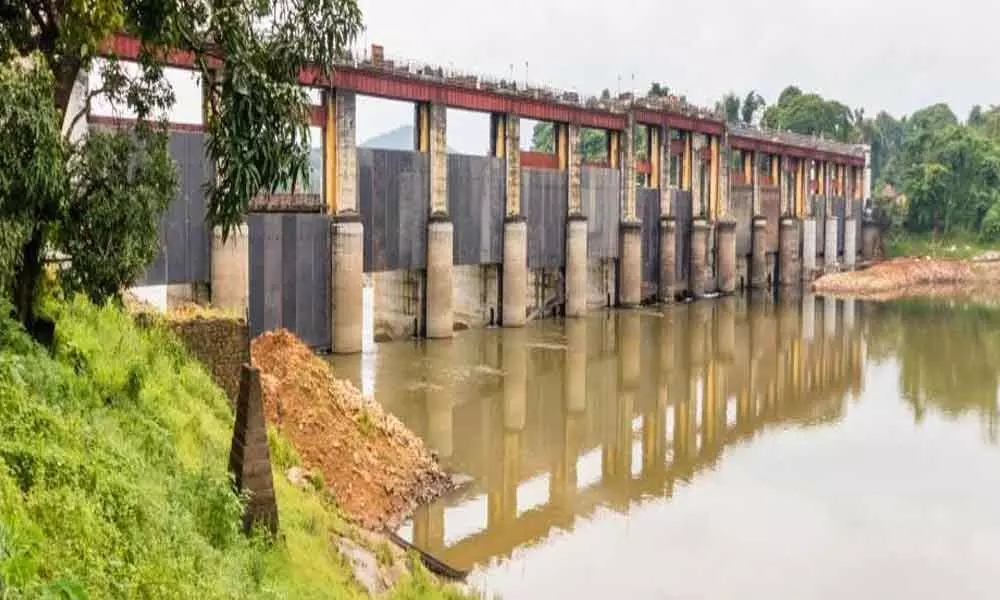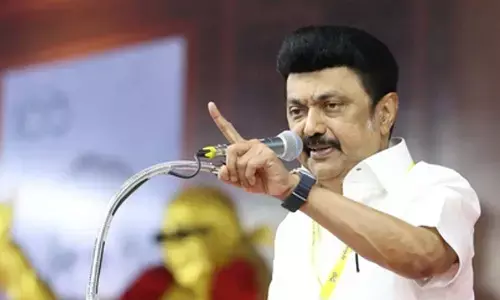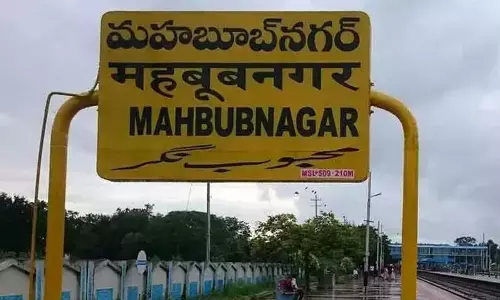An India where dams are no longer the new temples

The Union Jal Shakti Ministry has the responsibility of forcing the proverbial genie linked to water distress, into the bottle. Water distress today is a lot about development, environment, climate, community, infrastructure, economics, politics and water. The entire arithmetic needs to be relooked through appropriate policy changes.
The urban-rural water crisis has common roots, as expanding cities make inroads into rural neighbourhoods for their water needs. In India, the needs of the city are being given greater preference, even as the rural situation degenerates in the bargain.
Such an approach has exacerbated the rural water crisis and brought the water problem at the doorstep of the metros. Excessive use of groundwater in marginalised ecological settings has privatised it and has complicated its governance.
The role of community institutions to bring order to the chaos needs contemplation. The crowd-funding approach in the creation of wells is worth replicating for groundwater regeneration.
Regardless of the complexity of water crisis, it is time for the ministry to break down the problem into simple, identifiable components for arriving at easy solutions to begin with and move on sequentially with a larger plan. Based on such an approach, the need for additional irrigation projects and groundwater wells will become irrelevant.
Here are some important points to be taken note of:
Water footprint assessment to distinguish and assess the volume of green, blue, grey and black water generated is an urgent necessity.
Single use of water is a luxury we can ill-afford as this is the prime reason for urban water shortages and this needs to be fixed. Cascading levels of use is critical in reducing demand as well as manage sewage.
Urban water policy needs to be reframed with city architecture shifting focus on trees, shrubs, grasses, bare soils, water bodies, and improved bio-diversity. Dual water distribution has become a necessity.
The best locations for dams and borewells have been exhausted and only marginal sources are left. Since the best options have ceased to exist, new projects are prone to huge risks. Construction of irrigation projects and groundwater wells need to be clamped down, making them difficult to be implemented unless essential.
Agriculture water use needs to be brought down significantly (by half) from the existing 80 per cent.
Most of us might not realise that even though India is water-scarce, we export almost 15 per cent of our water as 'virtual water' through agri-products. Likewise, 10 per cent of all food procured is allowed to decay that can suffice to meet all rural drinking water demand.
Export of virtual water in the form of sugarcane, cotton, basmati rice, flowers, horticulture crops need to be swapped with less water-intensive and rain-fed crops to unlock close to 10 per cent of the country's water entrapped in these products. The legitimacy of water export for profits by a few traders, even as India suffers from serious water shortages, calls for a moralistic perspective.
Food grains rotting in warehouses is in reality a depletion of water. Ten per cent of the total water used in agriculture is lost because of a lack of storage facilities. This also raises the fundamental question: Do we need more dams to produce more grains that we do not care about anymore?
Rain-fed agriculture that contributes to half of India's food, has largely turned into cattle food. It is time to bring respectability to rain-fed crops like maize, millets, bajra, native fruits, and greens. Greater focus on rain-fed agriculture, with critical irrigation support can alter the water balance positively. This will require improved soil management, increased bio-mass and catchment protection, thus protecting ourselves from the fallouts of climate change impacts. Transforming the soil moisture profile as a reservoir capable of sustaining one crop of kharif should become the key agenda towards maximising green water, thus shifting the rivalry away from blue water.
Dry rivers beds, encroached flood plains and re-modeled river-fronts tell a story of grief and disruption of the natural processes. Keeping the rivers under siege/dry is not only a hydrological disruption of nature's processes but an ecological outrage. The shakti (power) in the rivers should not be contained. They need to be harnessed by ensuring minimum environment flow and never to be substituted by treated sewage.
Using treated sewage instead of precipitous flow is an affront to the aquatic systems and its bio-diversity. Groundwater recharge from riverbeds through treated sewage shall contaminate groundwater quality for several generations. Be it the Ganga or other rivers, their natural flow should principally be precipitation with allowable substitution of not more than 25 per cent during high flow regime with treated sewage (assured tertiary treatment to drinking water standards).
The dam safety ordinance of 2019 adds insult to injury as it looks at the physical stability of structures while lives, investments, and ecology are overlooked. This needs a relook and all dams that delivered the performance of less than 50 per cent, need to go for re-engineering — not necessarily physical dismantling (optional) but conversion to managed aquifer recharge structures or ecological water sanctuary, by adopting appropriate modifications.
Ridiculous as it may sound, politicians and engineers are working towards limiting rivers from emptying themselves into the ocean. The ministry has to understand that while this is a rash idea, it is also against the laws of nature and a recipe for an ecological disaster. Oceans hold 96 per cent of the earth's water resources and are a critical component of nature's water cycle. Limiting the flow of water into the sea is akin to holding back the water the humans consume from passing out.
Engaging the community as the watchdog for improved water governance can help reduce wasteful use as well as provide livelihood opportunities in areas like water treatment, water data monitoring, and training. Decentralised water governance through increased role for the municipality, ward, gram panchayat, block panchayat can help de-bureaucratise decision-making through community-stakeholder engagement, along with increased vigilance against abuse. Local institutions need to be provided with data, knowledge, and power for committing to just use of all available water and wastewater.
Over-indulgence of water markets is also the reason for growing inequality in availability and supply, largely due to failed policies. The water market has attained legitimacy as a benevolent institution in providing supplies to domestic, irrigation and commercial users. The clout of the water market cannot and should not be accepted as a necessity but a failure of policies, projects and governance mechanisms.
The Jal Shakti ministry has an unenviable task of setting right a system that is mortgaged to the Nehruvian model of big dams and green revolution. Pushed to the wall, this is an opportunity for a strict clampdown on redundant investments on big projects.
It is a chance to adopt an inclusive approach of working alongside ecology, hydrology, climate and societal constraints to bring in a mix of technologies, policies, governance and people's institutions to help alleviate the problem at the local level and moving up the ladder.
Perhaps, this is that time in history to try the democratic approach of empowering the water user (stakeholder) and ground-level institutions to be more responsible for governance, exercise vigilance and social pressure against abuse.
(The writer is a water resources consultant with over four decades of experience largely with UN and other funding agencies. Courtesy: Down to Earth)















